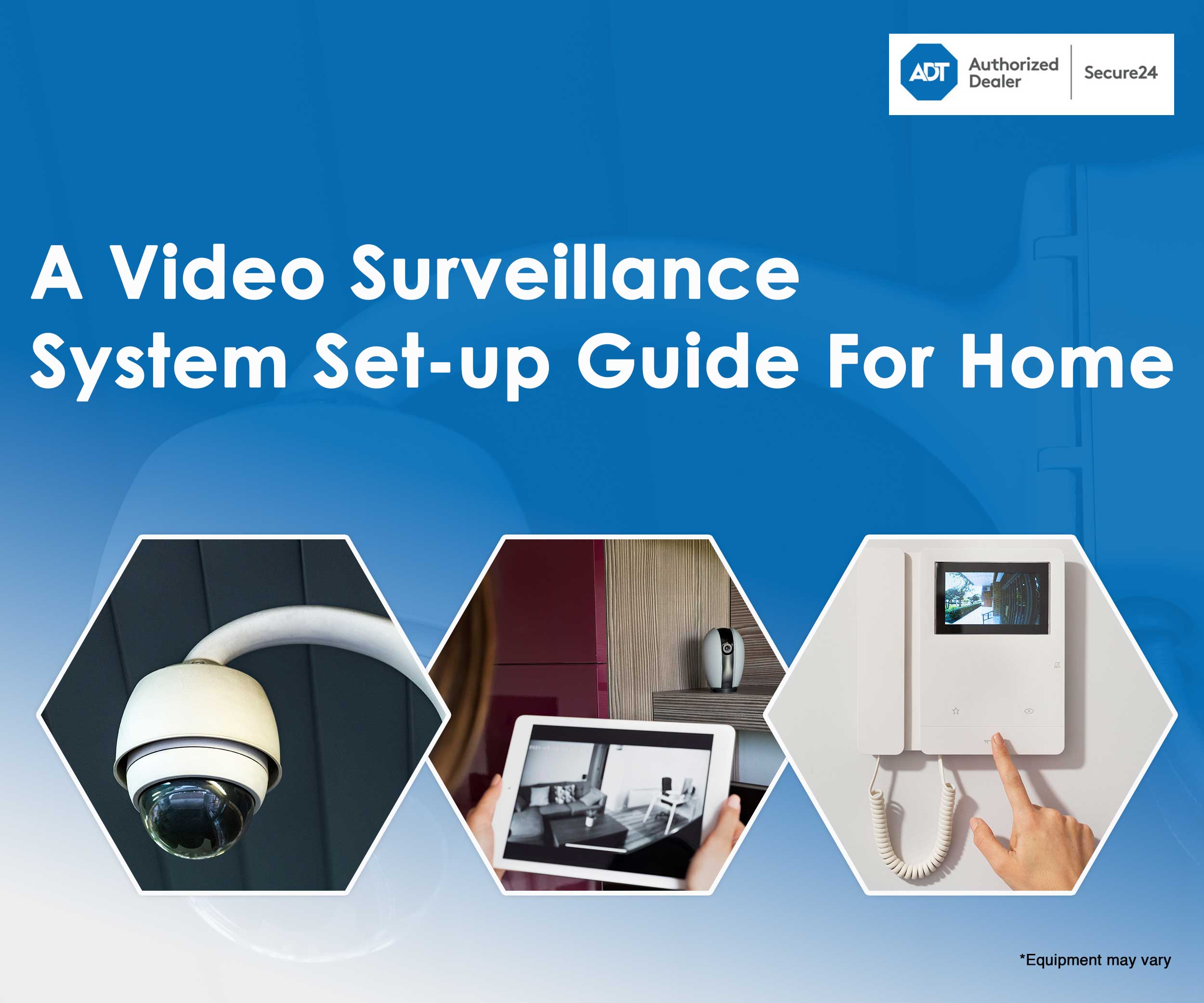
A Video Surveillance System Set-up Guide For Home
This article offers a comprehensive guide to educate readers about setting up a video surveillance system step by step, covering everything from choosing the right equipment to optimizing placement and ensuring optimal functionality. In a time of growing security concerns, setting up a video surveillance system at home has become a wise and popular investment for many homeowners. Whether you want to deter potential intruders, monitor your property while away, or keep an eye on your loved ones and pets, a well-designed surveillance system can provide peace of mind and enhance the safety of your household.
Assess Your Security Needs with Video Surveillance System
Before discussing the technical aspects of setting up a video surveillance system, it is essential to assess your specific security needs. Consider aspects such as the layout and size of your home, areas that require monitoring, and any existing security vulnerabilities. This assessment will help you determine the type and quantity of surveillance cameras you need and other surveillance system components.
Choose the Right Surveillance Equipment
Selecting the right equipment is crucial for the effectiveness of your video surveillance system. Here are some key components to consider:
- Security Cameras: Choosing high-resolution cameras capable of capturing clear images and videos, even in low-light conditions and at night, is crucial. For added flexibility, some options are dome cameras, bullet cameras, and PTZ (pan-tilt-zoom) cameras.
- DVR or NVR: You must decide whether to store and manage your footage with a network video recorder (NVR) or a digital video recorder (DVR). DVRs are suitable for analog cameras, while NVRs are compatible with IP cameras and offer more advanced features.
- Storage: Invest in sufficient storage capacity to store recorded footage. Consider options like internal hard drives, external hard drives, or cloud storage for redundancy and accessibility.
- Additional Features: Look for cameras and recording devices with motion detection, night vision, remote access, and mobile alerts for enhanced security and convenience.
Placement of the Cameras
Strategic placement of cameras is essential to maximize coverage and effectiveness. Here are some pointers to keep in mind:
- Entry Points: Install cameras near entry points such as doors, windows, and garage entrances to monitor potential intruders.
- Perimeter: Place cameras along the perimeter of your house to detect any suspicious activity or unauthorized access.
- Common Areas: Install cameras in common areas such as living rooms, kitchens, and hallways to monitor activities inside the house.
- Blind Spots: Identify and address any blind spots or areas with limited visibility, such as garage or backyard, to ensure comprehensive coverage.
Surveillance Camera Installation And Configuration
Once you have decided on the placement of your security cameras, it is time to install and configure them. The steps to install and configure are explained below:
- Mounting: It is important to securely mount the security cameras in their designated locations using mounting brackets or fixtures. Ensure they are fitted at the correct angle for optimal coverage.
- Connectivity: Connect the surveillance cameras to power sources and, if applicable, to the DVR or NVR using appropriate cables.
- Configuration: Follow the manufacturer’s instructions to configure camera settings such as resolution, frame rate, motion detection sensitivity, and recording modes.
- Testing: Test each camera to ensure it functions correctly and captures footage as expected. Make any required adjustments to camera positioning or settings.
Setting Up the Remote Access
One of the significant benefits of modern surveillance systems is that they help access live feeds and recorded footage remotely. Here’s how to set up remote access:
- Network Setup: Ensure your surveillance system is connected to your home network via cellular or Wi-Fi—Configure network settings per the manufacturer’s instructions.
- Mobile Applications: Install the manufacturer’s mobile app on your smartphone or tablet. Follow the app’s setup instructions to connect to your surveillance system remotely.
- Cloud Services: For added convenience and peace of mind, consider subscribing to cloud-based surveillance services that offer secure remote access and footage storage.
Maintenance And Monitoring Of Your Surveillance System
Regular monitoring and maintenance are crucial to keeping your video surveillance system in optimal condition. Here are some tips for ongoing maintenance:
- Periodically check for firmware updates for your cameras, DVR/NVR, and mobile apps to ensure they have the latest security patches and features.
- Clean camera lenses regularly to remove dirt, dust, and debris that may affect image quality. Use a dry and soft cloth to wipe the lenses gently.
- Routinely review recorded footage to identify security incidents or suspicious activity. If necessary, adjust camera settings or placement to address any issues.
- Recorded footage should be regularly backed up to external storage devices or cloud services to prevent data loss in case of hardware failure or theft.
Setting up a surveillance system at home involves careful planning, selection of appropriate equipment, strategic camera placement, and proper configuration. Following the steps discussed in this guide and being proactive with maintenance and monitoring, you can create a strong security solution customized to your specific requirements. Surveillance systems deter potential threats and offer you great peace of mind.

No Comments